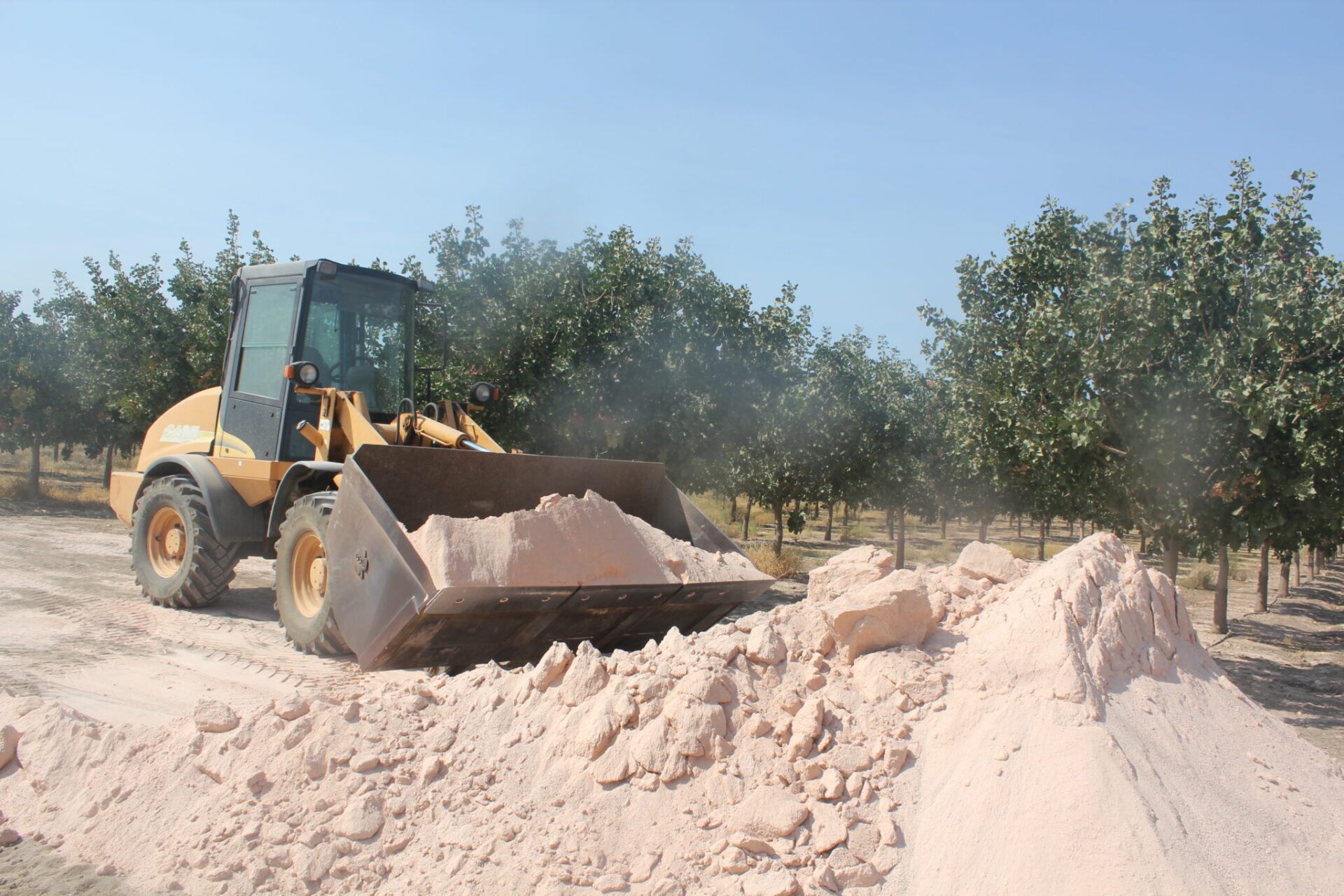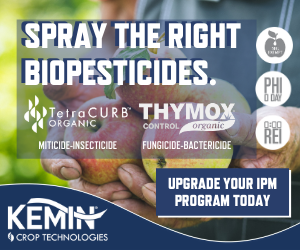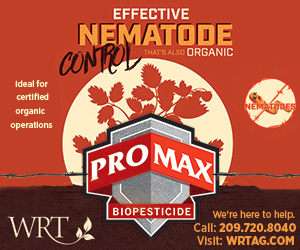
When the last load of nuts is put in the trailer, growers can heave a sigh of relief…then get back to work on next year’s harvest.
Depending on the tree nut, different types of work need to be done in the orchards to set them up for a productive year in 2021. Orchard sanitation, irrigation, nutrition management, pruning and evaluations for insect damage and weed pressure all need attention going into winter. Evaluating the harvest outcome is also part of the routine.
Sanitation
UCCE Orchard Systems Advisor Katherine Jarvis-Shean, who works with walnut growers in Yolo and Solano counties, said orchard sanitation should be at the top of the list this year due to environmental factors. An extended leaf-out occurred in many area walnut orchards, she said, and growers had to decide when to harvest most of the crop, knowing the later maturing nuts may not be ready. More nuts left in the orchards can mean a higher overwintering population of navel orangeworm (NOW), making good orchard sanitation necessary.
Not only almonds and pistachios, winter sanitation is equally important for walnut orchards to minimize the NOW population build up in the orchard.
A sanitizing shake, blowing the nuts off the berms and flailing should be done before fall rains keep equipment out of the orchard. Clean orchard floors prior to early rains will also help pre-emergent herbicide applications be more effective.
Almond value makes it imperative for growers to maintain their orchard sanitation to reduce NOW damage. Mummy nuts should be shaken off and destroyed by February. UCCE’s Sac Valley Almond News recommends in the Sacramento Valley, where NOW pressure is very high, shaking or hand poling mummy nuts to the level of one per five trees. The tolerance threshold is even lower in the San Joaquin Valley.
Fall Nutrition
Late fall is also a good time to revise or re-evaluate irrigation and nutrition programs if other issues are visible in the orchard. Nuts stuck to the tree after harvest may be the result of hull rot or excessive boron.
Zinc and boron are two important nutrients for growth in the spring and nut set, but only small amounts of these nutrients are needed compared to potassium and nitrogen. Prior to leaf fall is a good time to apply zinc and boron because the nutrients can be stored over winter in the tree. UCCE advisors note that fall soil-applied B fertilizer doesn’t increase plant B levels until after petal fall the next year but can correct deficiencies for several years.
When it comes to fall nutrition in mature walnut orchards, applications of potassium in chloride or sulfate form are the primary concern for next year’s hull development if your leaf sample analysis shows potassium deficiency. Potassium is important for helping plants move and store energy, regulating water loss and for flowering and fruit set. Potassium can be applied to the soil, be injected into a drip irrigation system or be applied through foliar sprays. UCCE and UC Davis research found that inadequate potassium decreased yields by increasing spur death. Making the applications prior to rain allows the material to move into the soil. If lower-cost potassium chloride is applied, it needs to leach out of the root zone before spring leaf-out. If the orchard has a perched water table, is in heavy clay soil or receives less than eight inches of winter rains, this should be avoided.
Pruning and Irrigation
Dry weather presents a good opportunity for pruning damaged branches or those interfering with orchard equipment to avoid spreading disease with rainfall. Pruning as early in the fall after harvest as possible will decrease chances of Botryosphaeria infections. Research showed that winter pruning resulted in higher infection rates than fall pruning.
Deficit irrigation in September to stop new growth in young trees is recommended. When the terminal bud is set, water can be applied to avoid stress and defoliation. Some moisture in the ground in November guards against damage in the case of a freeze event, Jarvis-Shean said. Adequate soil moisture is advised going into December to help trees withstand low temperatures. The top foot of soil is most important and, when filled to field capacity, can help young trees survive freezing temperatures.
Pest Considerations
Scouting for late summer or winter annual weeds can be done after the first rainfall. The UC IPM’s weed survey form can be found at ipm.ucanr.edu/PMG/C003/almond.
Pre-emergence herbicides can be applied, but care should be taken if there is a prediction for a heavy rain event as the rain can move the herbicide too deep into the soil to be effective.
Jhalendra Rijal, UCCE Area Integrated Pest Management Advisor for the northern San Joaquin Valley covering San Joaquin, Stanislaus and Merced counties, said taking nut samples from the orchard at harvest is important in maintaining a successful pest management program. Damage from NOW, peach twig borer, Oriental Fruit Moth, plant and stink bugs and ants will provide a guide to next spring’s pest control program.
In regards to NOW, Rijal said assessing almond mummy nuts for infestation rate will indicate the level or pressure next Spring. Most importantly, bring the tree mummy nuts below the recommended threshold levels of 2 mummies per tree in Sacramento and North San Joaquin Valley and 0.2 mummies per tree for the lower San Joaquin Valley.
“1-2% versus 20% infested nuts makes a difference,” he said.
In almonds, 100 dormant spur samples should also be collected in November and December to determine San Jose scale pressure. The UC IPM guidelines show how to sample and look for scale and scale parasites. If scale is found on more than 20% of the samples, an oil spray will target that pest. Other pests to be assessed from the spur sampling include European fruit lecanium and eggs of brown mites and European red mites.
Population of overwintering peach twig borer larvae, which are sheltered in tiny cells called hibernacula under the bark or bark cracks of the tree limb crotches and the trunk, can be estimated during the dormant season.
In walnuts, conducting dormant sampling is important. Dormant sampling includes examining tree scaffolds, limbs, branches, spurs and prunings to look for scale pests (walnut scale, San Jose scale, frosted scale, European fruit lecanium), mites and evidence of parasitism. It is important to keep a note of the assessment for possible delayed dormant treatment, Rijal said.
Assess Last Season
No job is complete until the paperwork is done. Yield and grade sheets from the processor can provide pistachio growers with an idea of how well their pest control and irrigation and nutrition management is working. The yield and percentages of split inshell, shelling stock (split) and closed shell, and within those categories, shell stain, insect damage and defects, are good indicators of orchard health and pest pressure, said UCCE Specialist Louise Ferguson. Ideally, comparing the current year’s results with previous season’s results, yield as averages of two years to compensate for alternate bearing, will indicate if orchard management is optimal.
“This information can show you where money is being lost,” Ferguson said.
“Total Edible Split Inshell” and “Total Edible Weight” of 75% and above should be the goal,” Ferguson said. “Nut size as “Nuts per Ounce” is also an indicator of a good crop, with 18-20 being optimal and 20-23 being good. “
As pistachio growers move into fall, last year’s spring experience with Juvenile Winter Tree Dieback (JWTD) should be remembered on actively growing young scions, and sometimes rootstocks, damaged or killed by the first unexpected frost. Resist the temptation to push late budded trees by irrigating past mid-August as the Golden Hills and Lost Hills cultivars budded late are particularly at risk if in saline soils, Ferguson warned. Zinc sprays can be used to force young trees into dormancy and avoid frost damage.
And postharvest irrigation, just as irrigation within the season, should be adjusted in those growing in saline conditions as less water will be taken up.
“It is better to cut water and pre-condition trees to the cold,” she noted.
Postharvest is also a time to consider compost applications or planting cover crops to improve water infiltration where there are compaction issues.

















